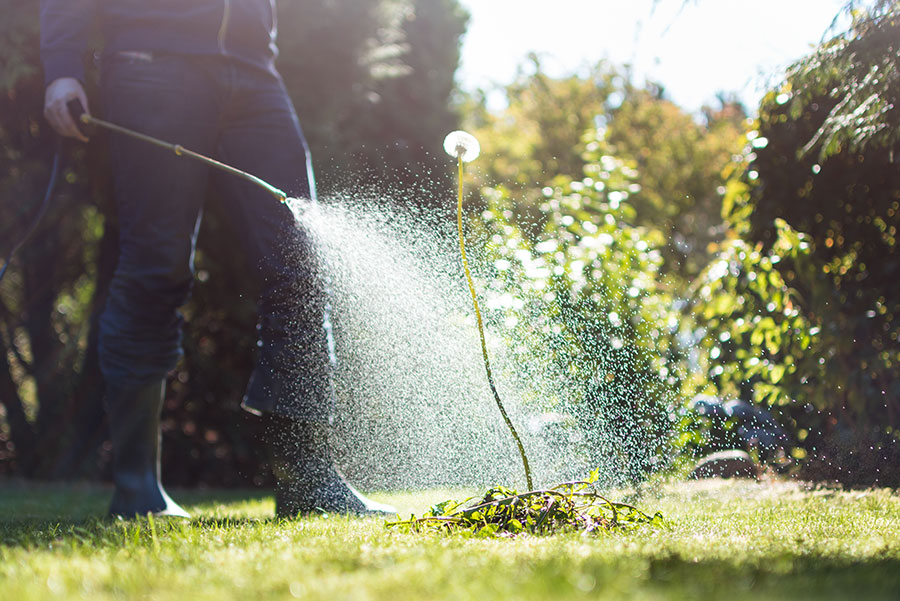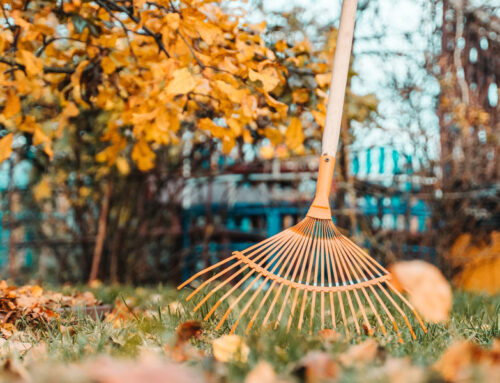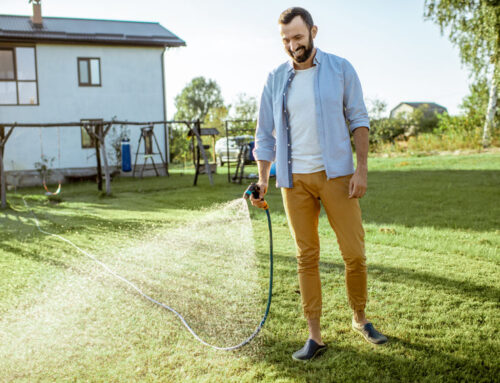Your lawn and garden provide luxuriant beauty that can be appreciated and admired by yourself, your family, your neighbors, and casual passers-by. However, weeds are seemingly ubiquitous intruders that tarnish the appearance of your landscape. The constant weed control necessary to keep them at bay seems to be an insurmountable task.
Here are some tips on how you can keep pesky weeds under control.
Time Your Weed Control Efforts
One of the most effective methods of getting rid of weeds is to simply pull them up. You will find that this will be much easier to accomplish, though, when the soil is wet. Moisture softens the ground so that you can more easily pull out the entire root along with the weed. This is crucial, as otherwise the weed will soon grow back. Pull the weeds shortly after it has been raining or after you have watered your lawn or garden. If you’re only working in a small area, use a watering can to moisten the soil first.
Use Appropriate Tools
Often you’ll find that it’s easy to pull out weeds by hand, but sometimes you’ll need a little extra help. An old table fork can help you twist out shallow roots. For weeds with taproots such as dandelions you’ll want to use a fishtail weeder or a dandelion grabber. For weeds that you are unable to remove, carry along shears so that you can trim their heads; this will help prevent them from scattering their seeds.
Dig Only Where Necessary
The deep soil in your garden contains weed seeds, but only the soil within one or two inches of the surface receives enough light to allow the weeds to grow. For this reason, dig into your soil only when necessary, and only in the specific patches where you need to work.
Use Mulch for Weed Control
Weeds crave light, so covering your soil with mulch creates a dark, cool, moist environment that prevents weeds from growing. The mulch should be about two inches deep; if it is much deeper than that, the soil may become oxygen-deprived.
If you use organic mulch, you may have the added advantage of resident insects such as carabid beetles and crickets. These insects also consume weed seeds.
To further retard weed growth, you can first put down newspaper, cardboard, or biodegradable fabric, and then apply a layer of mulch on top. In areas where you have planted vegetables or flowers, you can apply landscape fabric with holes cut so the plants can grow through.
Take Care with Spacing and Watering
As mentioned above, weeds love light, so if you space your plants closely enough that your soil is in shadow, you will hinder the growth of weeds. Instead of scattering plants in isolated dots throughout your garden, place them together in masses to create shade and throttle weed growth.
Additionally, weeds need water. To keep them thirsty, don’t indiscriminately watering your entire landscape. Instead, place drip hoses under mulch only around the plants that you want to irrigate.
Keep Your Lawn Healthy
The best method of preventing weeds from growing in your lawn is to keep the grass as healthy as possible. Practice good lawn maintenance by watering regularly, applying fertilizer at periodic intervals, aerating, dethatching, and applying an annual layer of compost. Mow your grass regularly, but keep it tall enough so that the shade prevents the growth of weeds. Maintain vigilance by frequently wandering through your lawn and inspecting it; watch for young weeds and pull them out before their roots have a chance to grow long.
Apply Herbicides
Despite your efforts, sometimes you may require the assistance of herbicides for effective weed control. Pre-emergent herbicides kill weeds before they are visible. If you apply a pre-emergent herbicide to your lawn in spring, you are able to get rid of the weeds before their appearance.
Be sure to meticulously follow the directions on the package. You apply post-emergent herbicides on the leaves of weeds that have already grown.
If you paint the weeds as soon as they appear, they will take only a few days to wither and die. A handheld sprayer is a good method of applying herbicide to a specific patch of lawn, but if you need to cover the entire lawn, you may need to use a pressurized sprayer.
Be sure to use herbicide that kills weeds but not grass. When you are spraying near a plant you want to save, open a large can at both ends and slip it over the plant. Alternatively, use a piece of cardboard to protect it from the herbicide.
Following these weed control tips will keep your lawn and garden weed-free with a minimum of fuss. Less time spent weeding means more time to appreciate the beauty of your backyard.






